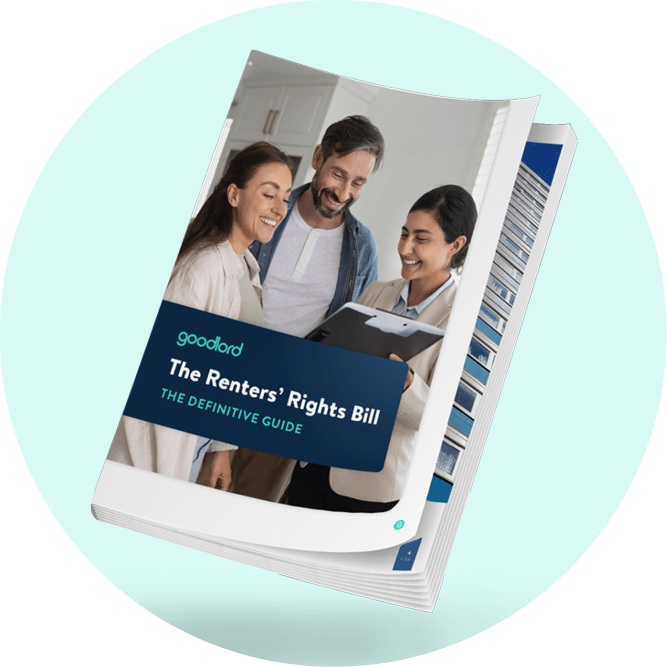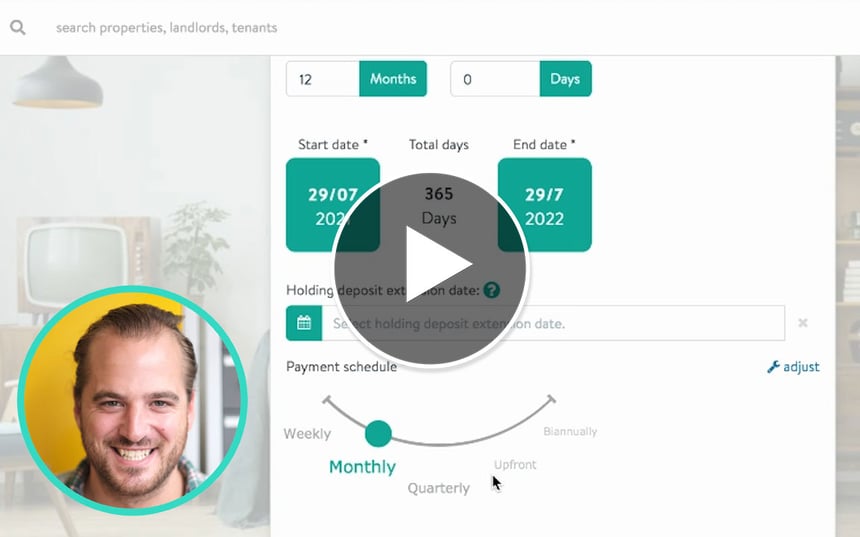Awaab’s Law: A letting agent’s guide
Awaab’s Law, part of the Renters' Rights Act, will enforce standards for safe and secure homes in the social and private rental sector. This is what letting agents need to know.
When two-year-old Awaab Ishak died from respiratory issues caused by prolonged exposure to black mould, the country was rightly appalled.
Despite repeated complaints from his family prior to Awaab’s death, the landlord failed to address the issue. On December 23, 2020, two days after Awaab’s death, a building surveyor from Rochdale Council found mould in the bathroom, kitchen, and bedroom wardrobe. Speaking in court, the surveyor declared that the one-bedroom social housing flat was “unfit for human habitation.”
In 2023, the English Housing Survey found that 7% of social housing units had a damp problem and 4% had a Category 1 hazard (the most severe type). Awaab's Law was brought into the social housing sector the same year, as part of the Social Housing (Regulation) Act 2023, to tackle the issue head-on. The government’s position, and indeed the general public’s, was clear:
What happened to Awaab’s family must never happen again.
From Monday, October 27 2025, Awaab's Law applies to all social housing in England. Through the Renters' Rights Act, these standards and regulations will be applied to the Private Rental Sector (PRS).
Michael Gove, the housing secretary at the Department for Levelling Up, Housing and Communities at the time, stated that the “death of Awaab Ishak should never have happened.” Awaab’s Law aims to “force landlords to fix homes within strict new time limits and take immediate action to tackle dangerous damp and mould to prevent future tragedies."
Letting agents must understand the implications of Awaab's Law for their operations, landlords, and the protections it affords private tenants.
In this guide, we cover:
- The need for damp and mould regulations
- What is Awaab’s Law?
- Timeframes for investigation and action under Awaab’s Law
- What are the consequences for non-compliance?
- What is the difference between Awaab’s Law and the Decent Homes Standard?
- When will Awaab's Law be implemented in the Private Rental Sector?
- What are a letting agent's responsibilities under Awaab's Law?
- Conclusion
The need for damp and mould regulations
Damp and mould hazards are prevalent issues in the housing sector. The English Housing Survey 2022-2023 revealed that 4% of dwellings, including 10% of privately rented homes, experience dampness.
There are different types of mould that can affect buildings, including:
- Rising damp - This occurs when moisture rises from the ground into the walls.
- Penetrating damp - This type of damp is caused by moisture entering a building through its fabric from the outside to the inside.
- Construction damp - This type of dampness is caused by structural issues in the building.
- Condensation damp - Due to a lack of proper ventilation, insulation, or heating, or sometimes a combination of all three, buildings can become saturated with moisture.
Historically, damp has been seen as an unavoidable fact of life. The housing stock of the UK is some of the oldest in Europe, with 78% of homes having been built before 1980. Older homes in the private sector were not built with modern protections and can therefore be susceptible to various types of damp, making them prohibitively expensive to maintain and upgrade.
The social housing stock in the UK faces challenges, with landlords and social housing providers struggling to maintain their properties. There are many reasons for the decline in housing conditions (reports of damp in social housing have steadily climbed since 2019), including the use of cheaper materials, shortcuts during construction, and neglect (willful or otherwise) by housing associations.
Awaab's Law, driven by Awaab’s family and the housing charity Shelter, seeks to enforce stricter accountability for landlords. Initially part of the Social Housing (Regulation) Act 2023, the law will now be expanded to private rentals through the Renters’ Rights Bill, alongside the Decent Homes Standard.
The current Housing Minister, Matthew Pennycook, said, “Awaab’s Law will help to drive a transformational and lasting change in the safety and quality of social housing, ensuring tenants are treated with fairness and respect”.
Download a letting agents guide to responsibility around damp and mould
What is Awaab's Law?
From October 2025, Awaab's Law holds social housing landlords accountable for promptly addressing complaints of damp and mould. Under the law, landlords are required to respond to their tenants' complaints and carry out repairs within a set timescale (more on this later).
After the Renters' Rights Act becomes effective, this secondary legislation will be expanded to the PRS, meaning private landlords and their letting agents will have to follow the same rules as social landlords.
Over time, Awaab's Law will be expanded to cover other housing hazards beyond damp and mould. The government has a clear timeline for this, so you can start preparing your clients now. Currently, the timeline looks like this:
In 2026
From 2026, Awaab's law will be expanded to cover the following hazards in social housing:
- Excess cold or heat
- Domestic hygiene hazards, pests and refuse
- Personal hygiene, sanitation and drainage
- Falls associated with baths, level surfaces, stairs, or between levels
- Structural collapse and explosions
- Fire and electric hazards
In 2027
From 2027, the law will be further expanded to cover all remaining category 1 and 2 hazards (excluding overcrowding) defined under the Housing Health and Safety Rating System (HHSRS). The remaining HHSRS Health and Safety hazards include:
- Carbon Monoxide and fuel combustion agents
- Radiation
- Asbestos and manufactured mineral fibres (MMF)
- Entry by intruders
- Exposure to excess noise
While some of these hazards can be addressed quickly, others will require a significant investment of time and money. Given the tight investigation and repair turnaround required by Awaab's law, you must ensure your landlords are made aware of any issues with their properties now. You can find a complete list of the hazards here.
Timeframes for investigation and action under Awaab’s Law
Social landlords are now required to adhere to strict timelines for addressing complaints of damp and mould. Letting agents should prepare for similar rules in the private sector under the Renters’ Rights Act. The current timescale under Awaab's law, as laid out in the government’s June 25 draft guidance, is as follows:
1. Investigation
Once a complaint has been made, landlords must use all available information to establish the severity of the issue. Mould and damp must be investigated within 10 calendar days of the initial complaint.
The first step in the investigation is to identify whether the issue is an “emergency” hazard or a “significant” hazard.
If the issue is deemed an emergency hazard, repair work must commence as soon as practically possible. The deadline for both the investigation and for the work to begin is 24 hours after the landlord is first made aware of the issue.
If the issue is found to be a significant hazard, the landlord must complete the investigation within 10 working days of becoming aware of the problem.
2. Written summary
After the investigation has been completed, the landlord must provide a clear, written summary of the investigation findings, the planned repair works, and estimated repair timelines within 3 working days.
3. Work starts
With the investigation complete, a written summary is provided to the lead tenant, and work to resolve the issue should begin as soon as possible. The timeline on this depends on the severity of the problem. Emergency repairs must be carried out within 24 hours, while repairs to significant hazards should start within 5 working days.
If repair work cannot reasonably begin within 5 working days, it must start as soon as possible. In this situation, the work must physically begin within 12 weeks.
Further considerations
If repairs cannot be completed promptly, whether or not they involve emergency hazards, alternative accommodation should be provided at the social landlord’s expense.
Letting agents should also maintain detailed records of all communications between landlords, tenants, and contractors to ensure compliance.
What are the consequences for non-compliance?
Much like the rest of the legislation covered by the Renters’ Rights Act, tenants will be able to make complaints to the Housing Ombudsman if their landlord fails to comply with the law. If the complaint is upheld, the Landlord will be fined £7,000 for initial breaches, with a maximum fine of £40,000 and possible criminal prosecution for serious violations.
The government has also consulted on specific enforcement actions related to Awaab's Law. If a landlord fails to act on a complaint, the tenant may be able to take action against their landlord for breach of contract (the contract in this case being their social housing tenancy agreement).
If the landlord is found to be liable, the court or the ombudsman could order the landlord to carry out repair works, pay compensation to the tenant, or pay some or all of the tenant’s legal fees.
What is the difference between Awaab's Law and the Decent Homes Standard?
The Decent Homes Standard (DHS) and Awaab’s Law share many similarities and overlap in their application. There are, however, some key differences that set them apart.
The Decent Homes Standard is about setting expectations and ensuring that every rental property is held to the same guidelines. Through the DHS, all homes must be in good repair, equipped with modern facilities, and provide adequate thermal comfort.
Where the DHS sets the standard, Awaab’s Law takes a much more active role in setting deadlines for repairs and ensuring that landlords are responsive to complaints. This fills an enforcement gap in the DHS, where tenants would have to wait for a ruling from the Housing Ombudsman. Awaab's Law is also primarily concerned with damp and mould.
Both standards are currently applied to social housing but will soon extend to the private rental sector through the Renters' Rights Act.
When will Awaab's Law be implemented in the Private Rental Sector?
Extending Awaab’s Law to the PRS will form part of the Renters' Rights Act, which is expected to become effective in 2026. The government plans to pass secondary legislation to expand the law sometime in 2026 and 2027. These dates may be subject to change, so make sure your landlords are ready for any changes to the timelines.
What are a letting agent's responsibilities under Awaab's Law?
Letting agents will play a crucial role in ensuring compliance with Awaab’s Law. Taking a proactive approach with the properties will help keep tenants happy and ensure your landlords are compliant.
The majority of landlords in the PRS want to provide safe, happy homes to their tenants. As their letting agent, you can help them by organising regular inspections, identifying potential hazards before they become a problem, and keeping detailed records on repairs and past issues.
Agents can also help landlords navigate the broader Renters’ Rights Act by staying informed of legislative updates. Remember that, ultimately, it's the landlord’s responsibility to remain compliant with the law.
Conclusion
Awaab Ishak’s tragic and preventable death is a stark reminder of what happens when systems fail to protect the most vulnerable.
As the law extends to the private rental sector, letting agents must take proactive steps to help landlords meet their obligations, including timely repairs and effective communication with tenants. With strict deadlines, financial penalties, and heightened focus on health and safety, the law's intent is clear: provide safe, clean housing or face the consequences.
This article is intended as a guide only and does not constitute legal advice. Visit gov.uk for more information.












